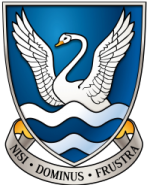CIVILisation Belfast – How Civil Engineers Make Belfast Work
On Friday 9th October, four pupils travelled up to Queen’s University to get an insight into Civil Engineering in Belfast. First there was a taster lecture, ‘Civil Engineers: Shaping the World’, where two lecturers explained the civil Engineering course in Queen’s University and one in particular grasped our attention as he talked about the Meccano bridge built by his students. The bridge spanned the Lagan River in Belfast and consisted of a total of 11,000 pieces of lightweight metal Mecanno pieces. This amazing feat achieved a Guinness World Record for the largest Meccano bridge ever built and received worldwide media coverage.
After our taster lecture we travelled to the Terminal Pumping Station at Duncrue to learn what happens to our waste water and how it is dealt with effectively to make sure that it does not to any harm to environment. Although it was a very smelly experience it was extremely interesting.
Moving on through the afternoon we visited the Lagan Weir where they explained that the original bridge was originally made for a lot less foot traffic than it received and therefore a new bridge had to be built in time for the Tall Ships event in early July 2014. We were shown the process of the building under a tight time deadline and were also shown the large basement under the Lagan Weir where the weir is managed by a team of people.
We then went to AECOM, a global provider of architecture, design, engineering, and construction services. During the visit they described how they were involved with engineering of current buildings and structures both locally and worldwide: from the Halley VI Research Station, in the Antarctic, to the world’s first fully movable building, the designing of the new stadium for the World Cup in Qatar in 2022 and the ‘Belfast: Streets Ahead’ campaign which aimed to redesign the entire city centre of Belfast.
During an afternoon visit to Victoria Square, we learnt about the engineering and architecture of the 900 000 square feet of retail space and leisure facilities. The project cost around £170 million to complete and faced many technical challenges. The ground conditions surrounding the site were notoriously poor it required numerous innovative geotechnical solutions to overcome this challenge. The works were within a congested city centre location surrounded on two sides by busy four lane roads and on two sides by pedestrian zones. Major traffic management was an integral part of the scheme and so a temporary traffic management scheme was designed and maintained throughout construction.
The last site visit was to the refurbishment and reconstruction of Windsor Park. This was extremely interesting as new stadium had not been opened to the public; we were the first group to visit it. Here we realised how much work and how many people it takes to build an important construction like a sports stadium, even down to the people employed to add seats to a stadium.
The final part of the day was to return to Queen’s University to talk to one another about our interest in engineering as well as getting to talk to more of the lecturers around the civil engineering building and we were even treated to a slice of pizza afterwards.
This course was extremely interesting. The area I found most fascinating was the description of the Meccano bridge build which was featured in news articles all over the world. Others found the ‘floating’ Victoria Square to be more fascinating but the whole day gave us a great insight into ‘How Civil Engineers make Belfast Work.’
Leah Montogomery
Year 14






